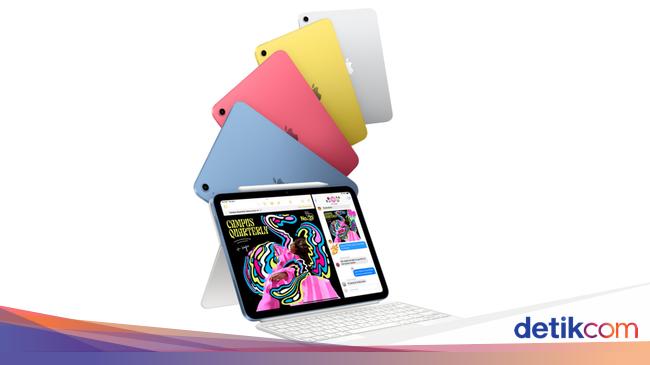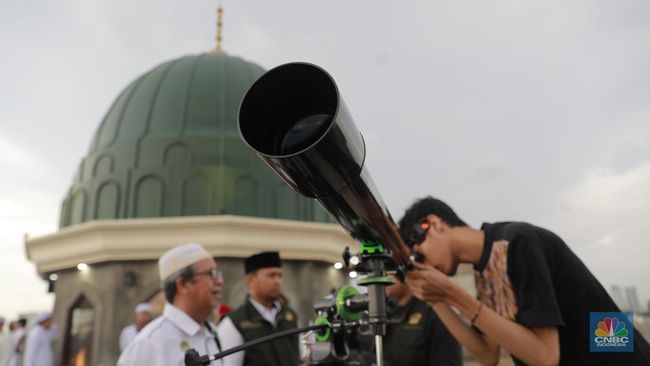A foldable phone isn’t for the faint of heart. They’re generally heavier, pricier, and have less capable cameras than a standard slab-style phone. And while they’re far less fragile than when they first debuted, foldables are still susceptible to the kind of damage a regular smartphone can shrug off. You really don’t want any dust getting in that hinge. But if you’re an adventurous sort of gadget lover, then a folding phone is a rewarding investment.
There are basically two kinds of foldables at the moment — the kind that fold like books and the ones that fold clamshell style, like your old flip phone. Here’s how I think of it: a book-style foldable is like a phone plus a tablet, and a flip-style foldable is a phone plus a smartwatch. The book foldables provide an outer screen for all your regular phone needs, and then a tablet-like inner screen when you want, well, more screen. Flip phones come with a smaller secondary display on the outer panel that’s useful for checking information quickly. When you need to do regular phone stuff, you unfold it.
What I’m looking for
There’s no shortcut to properly testing a phone; I put my personal SIM card (physical or otherwise) in each phone I review and live with it for a minimum of one full week. I set up each phone from scratch, load it up with my apps, and go about living my life — stress testing the battery, using GPS navigation on my bike while streaming radio, taking rapid-fire portrait mode photos of my kid — everything I can throw at it. Starting over with a new phone every week either sounds like a dream or your personal hell, depending on how Into Phones you are. For me, switching has become so routine that it’s mostly painless.
The phones listed here have powerful processors and enough RAM to keep up for years, so it’s fair to expect more than a handful of OS updates throughout the life of your phone. Four years of new OS versions and five years of security updates is a healthy benchmark for this class, and many of the phones here meet or exceed that standard.
Most phone cameras can perform well in good lighting conditions, from the flagship class down to $300 budget phones. The devices listed here offer a little something extra, like a useful telephoto lens, a great portrait mode, or impressive low-light shooting — and many include all three. Stabilization for the main camera unit to help in low light is a must in this category.
An IPX8 rating has become standard for foldables, meaning they can survive full water immersion. But X stands for “not dustproof,” and no folding phone maker has figured out how to fully protect these devices from dust yet — what with the moving parts and all. Devices with an IP48 rating aren’t dustproof either; they’re only rated to withstand solid particles 1mm or bigger, which is larger than dust.
In addition to the best devices at any price, I look for phones that offer the best mix of must-have features for good prices. That might lead to a recommendation of a lower-tier model if it’s particularly feature-rich for its price or last year’s model if it’s still sold new and this year’s device doesn’t offer many upgrades.
So while they all fit in one category of folding tech, they’re suited to two very different kinds of people — someone who wants even more phone with their phone and someone who wants to be fully immersed a little less. Whichever category you fit into, you’d be wise to get the manufacturer’s extended warranty with your purchase; fixes can be expensive, and you won’t be able to walk into just any phone repair shop to get them. If you don’t opt for the warranty, you’ll want to be sure you can comfortably afford to replace your phone in the event of a sudden sand-related catastrophe. Death can come swiftly to a folding screen.
If I haven’t scared you off by this point, then you’re probably the kind of person who will have a heck of a good time with a foldable. I’ve used every phone under the sun, and folding phones are some of my favorite gadgets. Run four apps at once! Prop it up like a tiny laptop! Hold it like a camcorder when you shoot video! There are tons of possibilities, and the thrill you get when you fold your phone shut never fully wears off.
Screen: 8-inch, 2076p, 120Hz OLED inner screen; 6.3-inch, 1080p, 120Hz OLED cover screen / Processor: Tensor G4 / Cameras: 48-megapixel f/1.7 main with OIS; 10.8-megapixel 5x telephoto with OIS; 10.5-megapixel ultrawide; 10-megapixel selfie (cover screen); 10-megapixel inner selfie camera / Battery: 4,650mAh / Charging: 21W wired, 7.5W wireless / Weather resistance: IPX8
The Pixel 9 Pro Fold is only Google’s second folding phone, but it’s more refined than you might expect from a sophomore effort. Where the Samsung Galaxy Z Fold 6’s long and narrow outer screen suffers from Remote Control Syndrome, the Pixel 9 Pro Fold feels like an ideal form factor. The outer screen matches the dimensions of a regular phone, and the whole package is light enough that you can sometimes forget you’re holding a phone that folds in half.
There are some shortcomings. Like other folding phones, the 9 Pro Fold has a slightly downgraded camera system compared to its slab-style siblings. You still get a good 48-megapixel main and a 5x optical zoom, but don’t expect to be able to push it too hard in dim lighting. And like other foldables, there’s no formal dust resistance, just IPX8 resistance to full water immersion. Google’s multitasking software isn’t as flexible as Samsung’s either, and you can fit two apps side-by-side on the screen rather than the Z Fold 6’s anything-goes approach.
It’s not perfect, but no folding phone is. The hardware matters a lot on a device like this, and Google got the hardware very right with the 9 Pro Fold.
Screen: 6.7-inch, 1080p, 120Hz OLED inner screen; 3.4-inch, 720p, OLED cover screen / Processor: Qualcomm Snapdragon 8 Gen 3 / Cameras: 50-megapixel f/1.8 main with OIS; 12-megapixel ultrawide; 10-megapixel selfie (inner screen) / Battery: 4,000mAh / Charging: 25W wired, 15W wireless / Weather resistance: IP48
The Flip 6 lacks some of the imaginative UI touches you can get on Motorola’s Razer Ultra, and the file folder-shaped outer screen feels more cramped than Motorola’s approach to fill the space — minus camera lenses, of course. But it’s more reliable, is scheduled to get seven years of software updates, and Samsung’s extended warranty offers good coverage for that extra peace of mind. Not the most titillating stuff, but it matters.
As you might guess from the name, the Flip 6 is far from Samsung’s first flip-phone rodeo. It comes with some thoughtful updates, like a true always-on display for the cover screen and a tweaked UI for adding widgets more easily. The cameras are good, though far from the best you can get for $1,100, and the battery goes all day. Its IP48 rating means there’s some protection from small particles, but dust is still a concern. Power users will need to download Good Lock to get the most out of the cover screen, but it’s perfectly capable out of the box for someone less adventurous. A bit boring? Yes, but that’s okay.
Screen: 7-inch 1224p OLED 165Hz inner screen; 4-inch 1080p OLED 165Hz outer screen / Processor: Qualcomm Snapdragon 8 Elite / Cameras: 50-megapixel f/1.8 main with OIS; 50-megapixel f/2.0 ultrawide; 50-megapixel f/2.0 selfie / Battery: 4,700mAh / Charging: 68W wired, 30W wireless / Weather-resistance rating: IP48
The Razr Ultra is the newest and most advanced member of Motorola’s foldable lineup. Compared to the Razr Plus, it boasts a higher-resolution inner screen, Qualcomm’s most powerful mobile processor, double the storage space, and an upgraded selfie camera. The device is also one of the best-looking phones you can buy — the gold-bronze chassis and wooden back panel lend the Ultra a real elegance. When every phone tends to look the same — even in the foldable market — the Razr Ultra stands out in a crowd, which only adds to its charm.
Beyond its appearance, the Ultra is just plain fun to use. The 4-inch outer screen covers almost the entire front of the phone, making it perfect for checking notifications, responding to messages, and taking quick actions such as hailing an Uber. The titanium hinge is also an upgrade over the stainless steel found in the Razr Plus. While the Ultra is enjoyable, it can’t overcome the gripes we’ve had with previous Motorola foldables, like inconsistent camera processing. Meanwhile, Motorola is only promising three OS upgrades and four years of security updates, which is on the shorter side considering the $1,300 retail price.
The best foldable for multitaskers
Screen: 7.6-inch, 1856p, 120HZ OLED inner screen; 6.3-inch, 968p, 120Hz OLED outer screen / Processor: Qualcomm Snapdragon 8 Gen 3 Cameras: 50 megapixel f/1.8 main with OIS, 10-megapixel 3x telephoto with OIS, 12-megapixel ultrawide, 10-megapixel outer selfie, 4-megapixel inner selfie / Battery: 4,400mAh / Charging: 25W wired, 15W wireless / Weather-resistance rating: IP48
The Galaxy Z Fold 6 is an excellent foldable in its own right. It has a top-notch Qualcomm processor, full water resistance, and a reliable camera system. It uses a tall-and-skinny form factor for the outer screen that I’ve never been able to get quite comfortable with, so it’s not my pick for the best overall book-style foldable, but it excels in one aspect where other devices fall short: multitasking.
Samsung, as usual, embraces chaos in the Galaxy Z Fold 6’s interface, to the device’s advantage. You want to run apps? How about three of ‘em on the same screen? Plus a little floating window you can plop down in the middle? Go for it. Other foldables allow multitasking to some degree, but none are as permissive as Samsung’s.
You can easily resize apps running on the inner screen, move them around, and save them so you can return to that combination later. Oppo (and by extension, OnePlus) offers a well-regarded UI that also allows you to use three apps — either all at once or with one minimized to the side to be quickly pulled back onscreen. Lots of people prefer it, and if your brain craves order more than chaos then it might be the better option. But there’s nothing quite like the experience that the Z Fold 6 offers on any other phone.
The best “I can’t believe it’s this thin” foldable
Screen: 8.12-inch, 2248p, 120Hz OLED inner screen; 6.62-inch, 1140p, 120Hz OLED outer screen size/ Processor: Qualcomm Snapdragon 8 Elite Cameras: 50-megapixel f/1.9 main with OIS, 50-megapixel 3x telephoto with OIS, 8-megapixel ultrawide, 8-megapixel selfie cameras (inner and outer) / Battery: 5,600mAh / Charging: 80W wired, 50W wireless / Weather-resistance rating: IPX8/IPX9
Let’s get the bad news out of the way first: if you live in the US or Europe, you can’t buy the Oppo Find N5. That rules out, well, a lot of us. But if you live in China, Singapore, or any of the other Asian countries Oppo included in its so-called “global” release, then you’re in luck: you can pick up the world’s thinnest book-style folding phone, and the rest of us are all very jealous of you.
The Find N5 isn’t all about thinness. Its Qualcomm Snapdragon 8 Elite chipset is highly capable, the phone is fully water-resistant, and battery life is excellent. But let’s be real, its uniquely thin profile is the big selling point. It’s hard to overstate how slim it is: just barely thicker than a standard slab-style phone, and only slightly heavier. That matters when you’re using the phone via the cover screen for long periods of time or stashing it in the side pocket of your yoga pants. When a foldable is only about as heavy and bulky as a regular phone, using the inner screen feels like getting away with something fantastic — not a benefit you have to make many other sacrifices for. Oppo delivers this in spades, and I just wish more of us could… find it.
Other foldables to consider
- The OnePlus Open strikes a great balance in its form factor and offers a clever UI for multitasking that has won plenty of fans since it debuted. But the phone lacks wireless charging and full water resistance — it’s only splash-resistant — and OnePlus’ software support policy isn’t as strong as Google’s and Samsung’s.
- The Huawei Mate XT gets an honorable mention for its sheer wow factor alone. The “trifold” phone — as it’s been dubbed — contains three screen segments and two hinges, putting it in a category of its own right now. It’s only available in China and a few other countries that don’t include the US or the UK, and it’s monstrously expensive at €3,499. But it’s cool as heck and may be a sign of things to come from other manufacturers.
- The Motorola Razr Plus 2025 is new to the scene, replacing last year’s model. Although the two devices look identical, there are a few notable changes. The biggest difference is that the Razr Plus 2025 now features a titanium hinge, rather than stainless steel, promising better durability and a less noticeable crease when the device is open. Additionally, the Razr Plus 2025 offers IP48 dust and water resistance, whereas last year’s model featured an IPX8 rating. While we haven’t tested the newest model, it appears to be a solid alternative to the Ultra.
- The standard Motorola Razr 2025 is a more affordable entry point into the world of foldables, starting at $699. The Razr 2025 offers improved performance, battery life, and durability — the kind of bumps we expect year after year. It boasts a smaller cover screen compared to the Razr Plus and Ultra, but still offers a spacious 6.9-inch internal display. We haven’t tested the Razr 2025 yet, but its relatively budget-friendly price is a good option for jumping into the foldable market.
- Samsung has an Unpacked event on Wednesday, July 9th, at 10AM ET, where we’re expecting to see new foldable devices. The company has been leaving clues about what’s coming for weeks — in a blog post from early June, it teased the “next chapter of Ultra,” hinting that the rumored foldable Galaxy Ultra is imminent. Samsung has also teased a “new era” of thinner, lighter, and more durable foldable devices coming to its Galaxy Z Series.
Update, June 30th: Replaced our pick for “the foldable that’s the most fun” with the Motorola Razr Ultra 2025. Added the Motorola Razr Plus 2025 and Razr 2025 in the section for “other foldables to consider.” In the “what’s coming next” section, we added information about Samsung’s upcoming Unpacked, which could feature new foldables devices. Finally, we updated this guide to reflect current pricing and availability. Brandon Russell contributed to this post.

 2 months ago
29
2 months ago
29


























































